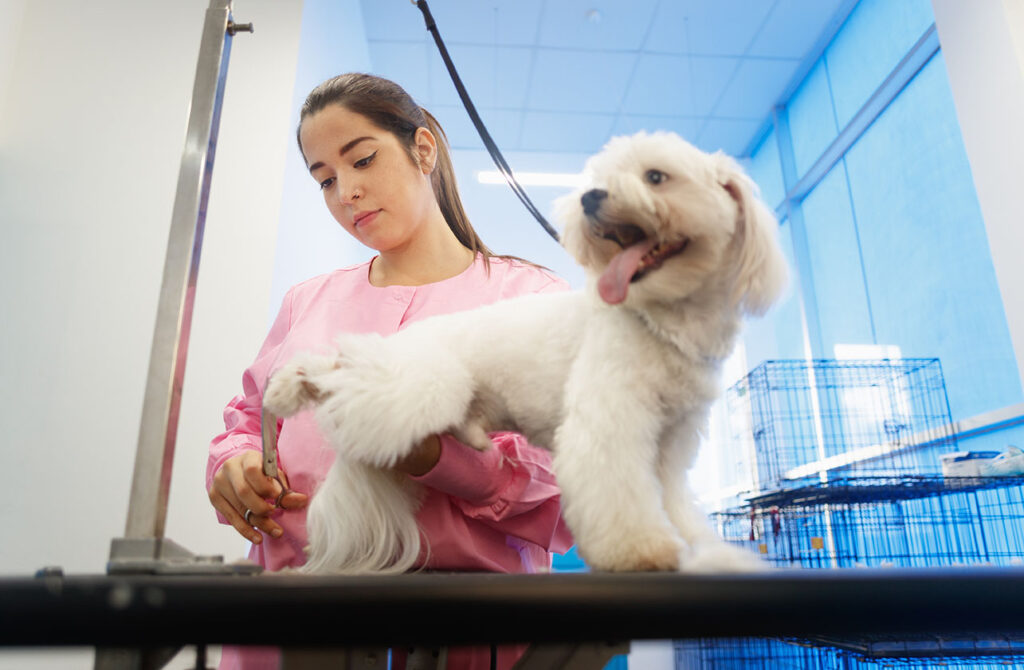The Dog Blog – How to Prepare Your Dog for the Winter Months
The winter months seem to come around all too quickly, so it is important to make sure that your dog is well prepared for the change in temperature. You will need to consider things like a dog coat, dog boots, a warm winter bed, and some extra cozy blankets for your pet. It is worth remembering that some dogs will be able to withstand the cold weather better than others, so you should find out as much information as you can about your dog’s individual requirements beforehand.
Invest in a dog coat and boots
Unless you have a cold-tolerant dog breed, like a husky or Newfoundland, you should consider investing in a dog coat and boots for your pet. When you begin looking at winter dog clothes, you will find yourself spoilt for choice with so many colors and designs to choose from. It is important to make sure that any coat you purchase for your dog fits well and doesn’t restrict their movements in any way. It is, therefore, best to measure your dog before you start looking at protective clothing and, if possible, try the items on your pet before you buy them.
It may take your pet a little while to get used to wearing a coat and boots, but plenty of patience and understanding should eventually pay off. If your dog really dislikes wearing boots, you could try using paw wax instead to protect their paws.
Brush your dog well after walks
It is important to brush your dog regularly during the cold weather, especially after walks, to remove any dirt from the coat and prevent it from getting badly matted. Ungroomed coats can also harbor unwanted pests such as fleas, and lack the insulation required during the cold weather.
Look after the ears and paws
Always dry your dog off well after a walk, paying particular attention to the ears and paws. Keeping the fur short between your pet’s toes can help to prevent sore, cracked pads and ice balls from forming, and trimming the hair inside their ears will help to prevent ear infections.
When walking your dog in cold conditions, especially if you live in a city, try to avoid walking on too much rough terrain. You should also be aware that there may be salt, grit, and pools of antifreeze underfoot, and these can all irritate your pet’s paws.
Limit your dog’s time outdoors
If the temperature plummets, it is important to limit your dog’s time outdoors to avoid the possibility of frostbite or hypothermia. Cold air can also have an adverse effect on a dog’s muscles and joints, so it is necessary to make sure that outdoor kennels or any other outdoor dog accommodation is well insulated.
Keep your pet hydrated
You should always remember to keep your pet well hydrated, even during cold weather conditions, as daily exercise, outdoor clothing, and an extra warm dog bed with additional blankets can have an impact on your pet’s hydration levels. Remember also to use plastic water bowls outdoors for your dog during cold weather, as metal bowls can freeze.
Provide a warm and cozy bed
All dogs should have a bed of their own that they can snuggle down in whenever they need a nap. Your home may be warm inside when the heating is on in the winter, but the temperature will drop quite quickly once it is turned off. It is therefore important to provide your pet with a bed that is insulated enough to keep it warm during the colder parts of the day. You may need to purchase a winter dog bed for your dog, or you could simply invest in some extra blankets. You could even consider buying a heated dog bed or a heating pad to place inside the bed.
Keep an eye on the calories
During the cold weather, your dog will burn up more calories than normal and will probably demand more food. Don’t be afraid to provide a few extra treats to keep your pet’s energy levels up. However, remember not to let your pet overindulge, and ensure that any extra food you provide is healthy.
Stay safe
When the winter arrives, the nights and early mornings start to get darker. It is, therefore, crucial to ensure that both you and your dog are visible in the dark. It is a good idea to avoid wearing dark clothing on walks and to invest in some reflective gear for you and your dog. You should also avoid slippery paths as much as possible and stay away from frozen ponds and lakes.
Conclusion
Remember to keep old dogs with health issues and small puppies indoors if the outside temperature dips to extreme levels. Make sure that you have stocked up your cupboards with plenty of dog food and any required medications before the winter sets in. Keeping your canine friend warm and safe during the colder months of the year will ensure that they stay fit and well.


